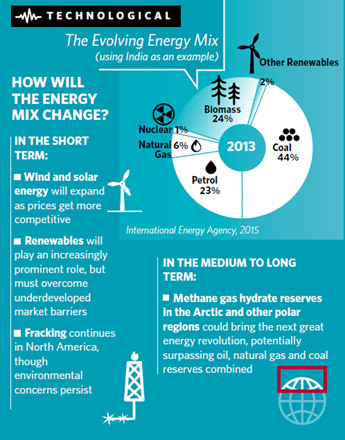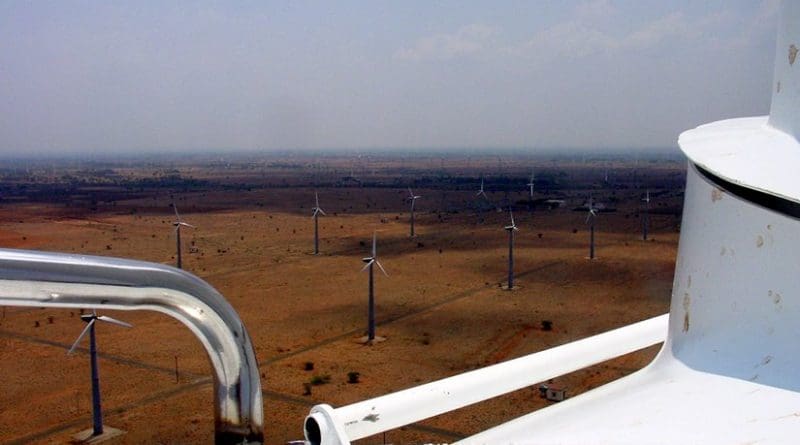The New Energy Order: What To Watch Next
By IESE Insight
What are the world’s energy experts talking about this year?
Cheap oil, the landmark Paris agreement, tomorrow’s demographic trends and shifts in the energy mix, to name a salient few.
Each year, IESE hosts an Energy Industry Meeting and publishes a report on the year’s top trends. Below we list four main areas to watch in the New Energy Order.
1. Geopolitical Shifts:
All oil-exporting nations are affected by the low price of oil. But not equally. Those nations without large reserves nor sovereign wealth funds to cushion them are particularly vulnerable. For the near term, the most negatively impacted countries include Venezuela, Nigeria, Russia and Angola. On the flip side, the world’s net importers — namely India, China, Indonesia, Turkey and South Africa — have the most to gain.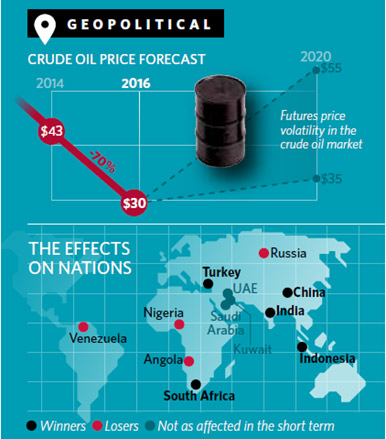
2. Environmental Impact:
The amount of carbon dioxide (CO2), the primary greenhouse gas linked to global warming, has risen 60 percent since 1990. At the Paris Summit, 2 degrees Celsius above pre-industrial levels was the agreed upon temperature rise limit. Meanwhile, if all countries stick to their intended nationally determined contributions (INDCs), the predicted temperature rise would still be about 3 degrees Celsius. It is clear that nations need to focus on renewable energies for the future.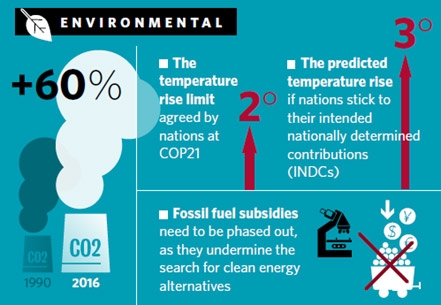
“Much greater emission reduction efforts” than those associated with the INDCs will be required in the future to hold the temperature rise below 2 degrees Celsius, the COP21 framework warns. Greater investments in clean energy research are needed to move away from fossil fuel dependence.
3. Demographic Trends:
The United Nations estimates that the world population, currently 7.3 billion people, may reach 9.7 billion by 2050. Growth is expected to be uneven, with India and Africa accounting for most of it. At the same time, consider the rapid process of urbanization underway. Today, about 54 percent of the world’s population lives in urban area. By 2050 this percentage is expected to reach 70 percent.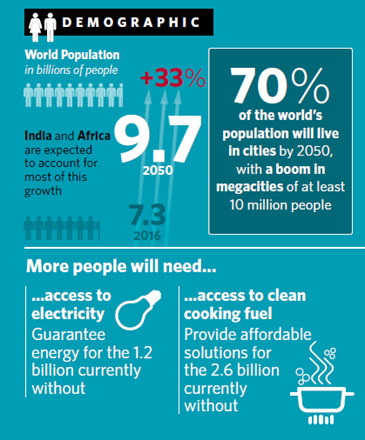
With 2.4 billion more people expected, the pressure is on to expand access to electricity and clean cooking fuel in the years ahead.
4. Technological Advances:
Technological advances make new energy extraction techniques, such as fracking, possible. New breakthroughs are expected to enable the extraction of other resources, such as methane gas hydrates in the Arctic and other polar regions.
Meanwhile, new electricity storage techniques may make renewables more economically attractive. A more prominent role for renewables in the energy mix of coal-dependent countries, such as India, is key for limiting CO2 emissions in the future.